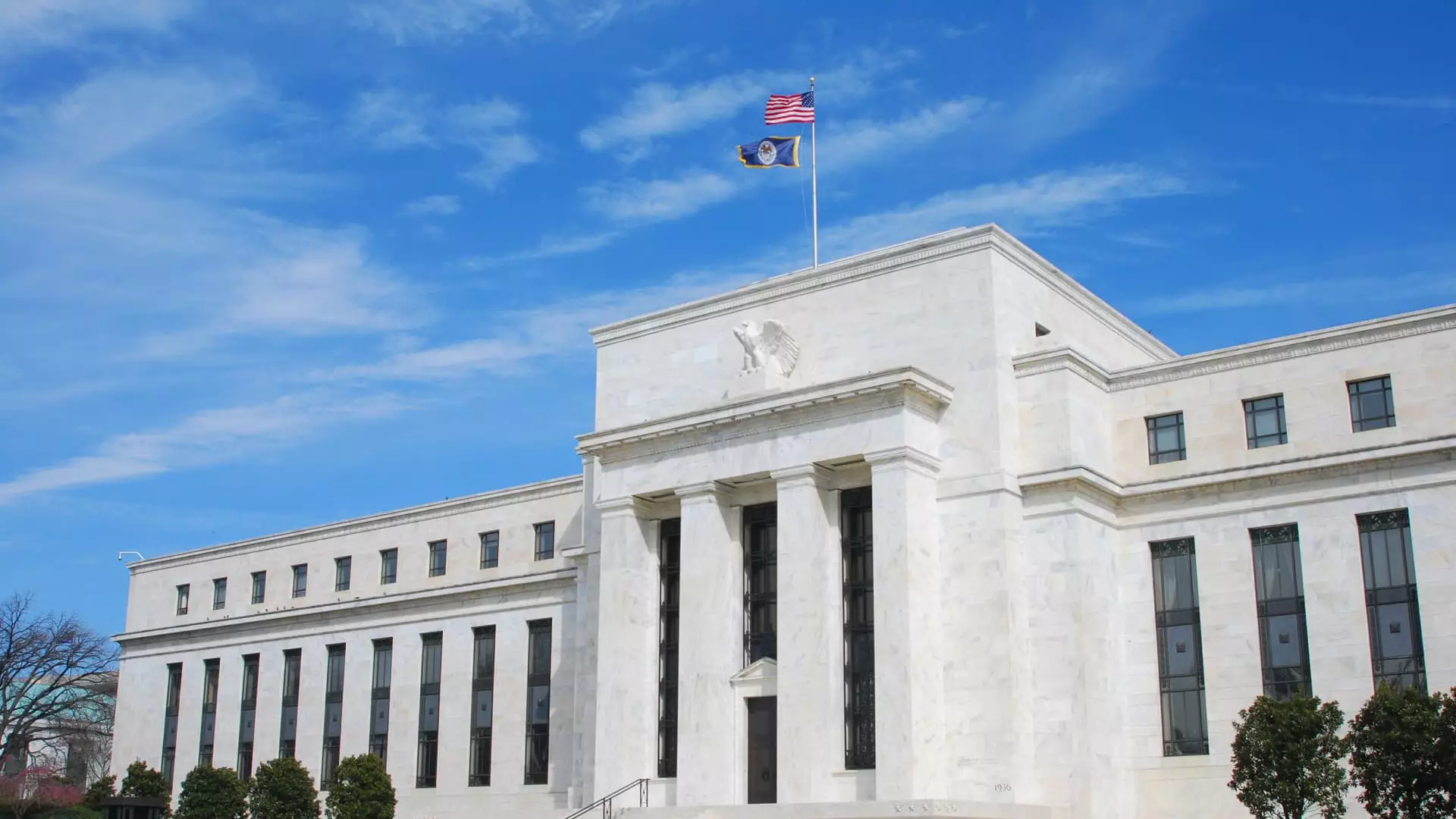The Federal Reserve’s decision to maintain interest rates marks a crucial moment in U.S. financial policy, and it prompts an alarming question: how does the Fed plan to navigate the uncertain waters ahead? The anticipated pause in rate cuts comes even as inflation shows signs of easing, yet the backdrop reveals a troubling escalation of trade tensions that could counteract any relief that consumers might experience. It seems that the Fed is stuck in a quagmire, unsure whether to act decisively or to linger in a state of indecision.
Andrzej Skiba, the head of U.S. fixed income at RBC Global Asset Management, raises pertinent concerns about the inflationary repercussions of tariffs, cautioning that this is merely the beginning of a potentially explosive situation. As we see tariffs imposed not only on European goods but possibly on broader categories, expectations of future inflation take shape. The Fed’s inertia casts doubt on its ability to respond effectively, which ultimately leaves the public feeling exposed and anxious.
Consumer Sentiment: A Worrisome Decline
Recent data indicates a significant dip in consumer confidence—a telltale sign that the average American is feeling squeezed, both economically and emotionally. Greg McBride, chief financial analyst at Bankrate.com, articulates this pain succinctly: “Consumers are stretched and stressed.” With the average household grappling with the dual pressures of persistent inflation and high consumer debt, it’s no wonder that public sentiment is faltering.
When you connect the dots between stagnant wage growth, soaring living costs, and a toxic cocktail of financial uncertainties, the picture begins to look bleak. While it’s somewhat reassuring that borrowing costs for mortgages, auto loans, and credit cards have shown slight declines, this development is overshadowed by the reality that average Americans still face oppressive debt burdens.
The Interaction Between Rates and Consumer Debt
The federal funds rate undeniably impacts consumer behavior and financial decisions. The current stagnation offers a double-edged sword: while households may welcome lower rates, the reality is that they are already trapped in a web of high-interest debt. The inconsistency in credit card annual percentage rates (APRs), which have only marginally declined from record highs, serves as a glaring reminder that not all borrowers benefit equally from monetary policy decisions. While recent months saw some reprieve, many consumers remain shackled to variable rates that mirror the Fed’s suggested borrowing benchmarks.
For the average American burdened with credit debt, a 20.09% APR represents an insurmountable hurdle—a figure that is both intimidating and untenable. Schulz acknowledges that the sentiment surrounding credit card debt continues to reflect a severe crisis for many. Rising year-over-year revolving debt is symptomatic of a larger trend wherein consumers increasingly rely on credit to navigate everyday expenses.
Real Estate Market: A Mixed Bag
Mortgage rates have also played a pivotal role in shaping the current landscape. Although the reduced average rate for a 30-year fixed mortgage—to 6.77% from 7.04% earlier in the year—seems promising, it only slightly alleviates the pressures on potential homebuyers. The ramifications of stagnant trade policies also loom large; rising uncertainty inherently discourages consumer decision-making in a market typically characterized by flexibility and responsiveness.
It is especially ironic that, despite the Fed’s cautious stances, fluctuations in rates might lead to detrimental outcomes for prospective homeowners. As Schulz points out, the declining trend in mortgage rates isn’t driven by clear-cut policy benefits, but rather by a collective sense of trepidation regarding future economic stability.
Long-Term Implications on Student Debt
Among various forms of consumer debt, student loans take on a particularly pernicious identity. Given that undergraduate federal student loan rates have risen to 6.53% for the coming academic year—up from 5.50%—the burden on young adults seeking to enter the workforce continues to grow heavier. Fixed rates may offer some relief, but they also raise concerns about the future challenges that an entire generation will face as they navigate a complicated financial landscape.
While it might be tempting to view online savings accounts offering interest rates averaging 4.4% as a silver lining, this perception fails to recognize the bigger picture. For many Americans, the strategies they implement to save are overshadowed by the daily struggles of managing debt and making ends meet. Long-term financial viability can only be achieved by altering the underlying structural issues that create these pressures in the first place.
As the Federal Reserve keeps interest rates steady amid troubling economic currents, the implications for the average American consumer are complex and deeply troubling. The interplay of trade policies, consumer sentiment, and debt burdens speaks to a larger narrative of an economy at a crossroads. Acknowledging these trends should compel us to demand more effective leadership and proactive financial policy aimed at fostering a sustainable economic environment for all.

